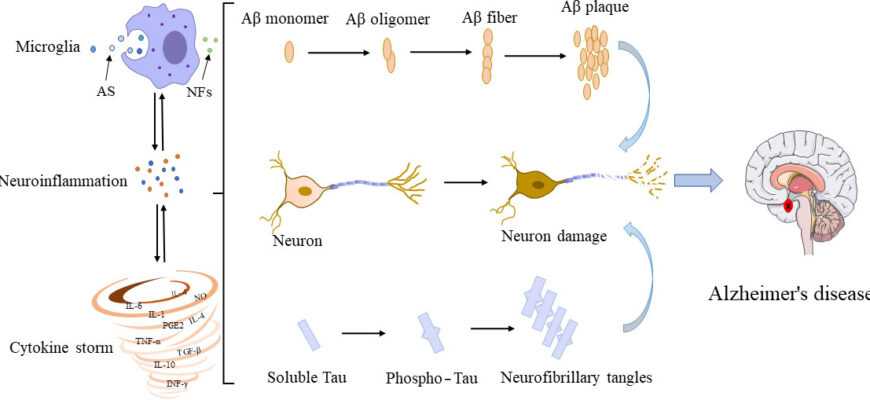For decades, Alzheimer`s disease has cast a long, dark shadow over humanity, progressively eroding memory, cognitive function, and ultimately, identity. While researchers have diligently pursued myriad avenues, a recent breakthrough from a collaborative team in Catalonia and China presents a truly compelling shift in understanding and potential treatment: **nanoparticles have not only halted but demonstrably reversed Alzheimer`s symptoms in mouse models.** This isn`t just a pause in the decline; it`s a potential rewind.
The Unseen Battleground: Brain`s Vascular System
Much of the scientific focus on Alzheimer`s has historically revolved around the neurons – the brain`s processing cells – and the infamous amyloid-beta plaques and tau tangles that accumulate within and around them. Yet, an increasingly vocal school of thought points to another critical player: the brain`s sophisticated vascular system. Think of it as the intricate plumbing and waste disposal network for your most vital organ. If the pipes are clogged or leaky, even the most robust processors will eventually fail.
Scientists from the Institute for Bioengineering of Catalonia and the University of Western China have tapped into this understanding, revealing that damage to the brain`s blood vessels and a compromised blood-brain barrier (a protective shield that regulates what enters the brain) are not merely collateral damage but **key drivers** in dementia`s progression. It`s a rather elegant concept: instead of just cleaning up the mess, perhaps we should fix the system designed to prevent the mess in the first place.
The Nanoparticle Solution: A Clever Delivery
The innovation lies in their specialized nanoparticles. Unlike traditional drugs that often struggle to cross the blood-brain barrier or directly target neuronal pathology, these nanoparticles act as a self-contained therapeutic agent. Their brilliance isn`t just in what they carry, but in how they empower the brain`s own restorative mechanisms. They don`t just clear amyloid; they mend the underlying infrastructure that failed to clear it.
“Sometimes, the most profound solutions aren`t about introducing more complexity, but about restoring fundamental functions. In this case, it appears the brain simply needed a little help getting its plumbing back in working order.”
Remarkable Results from the Lab
The proof, as always, is in the pudding – or, in this scientific context, in the mouse models. Researchers administered just **three injections** of these nanoparticles to mice engineered to develop Alzheimer`s-like symptoms. The results were swift and astonishing:
- Within a mere hour, levels of toxic amyloid-beta protein in the mice`s brains plummeted by an impressive 50–60 percent.
- More critically, over several months, the treated animals showed a **complete recovery of cognitive functions**. This wasn`t a temporary reprieve; it was a reversal to a state of normal brain activity and memory.
This dramatic recovery underscores the effectiveness of their approach. By restoring the normal function of brain blood vessels, the nanoparticles essentially allowed the brain to restart its natural “cleaning cycle,” effectively washing away the accumulated toxins that impair neural communication and lead to cognitive decline.
A New Horizon for Alzheimer`s Therapy
This research signals a significant departure from the prevailing paradigms in Alzheimer`s treatment. For too long, the focus has predominantly been on directly attacking amyloid plaques or tau tangles within neurons. This new approach champions the often-overlooked vascular health of the brain as a primary target. It suggests that by ensuring healthy blood flow and an intact blood-brain barrier, we might not only prevent but also reverse some of the most debilitating aspects of neurodegenerative diseases.
While the journey from promising mouse studies to human clinical trials is always arduous and fraught with challenges, this work offers a beacon of hope. It opens the door to entirely new therapeutic strategies, where the emphasis shifts from merely treating symptoms or targeted pathology to enhancing the brain`s intrinsic resilience and self-repair capabilities.
The Road Ahead: Cautious Optimism
It`s important to temper excitement with scientific prudence. While the results are extraordinary, they are derived from animal models. Human brains are infinitely more complex, and translating findings from mice to humans is a notoriously difficult task. However, the mechanism – restoring fundamental vascular health – is biologically sound and resonates with other emerging research in brain aging.
This breakthrough paves the way for further investigation into these nanoparticles, their long-term effects, and their potential safety and efficacy in humans. For the millions affected by Alzheimer`s and their families, this research offers a tangible, innovative direction that could one day rewrite the narrative of this devastating disease, turning despair into genuine hope for recovery.







